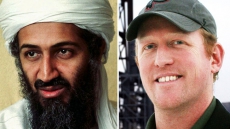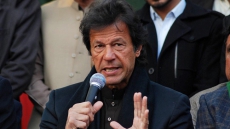Contrary to the age-old assumption that the Indus script is a language, a veteran science historian has claimed that it is numerical, as evident from numbers and symbols in the seals and artifacts of the Indus Valley Civilisation (3000-1900 BC).
"Attempts to decipher the Indus script were based on the assumption that a script should connote linguistic writing. There are many languages the world over without a script even today," the 90-year-old historian, B.V. Subbaraayappa, told IANS here.
Though the Indus Civilisation came to light 90 years ago when then Archeological Survey of India (ASI) director general John Marshall wrote about its discovery in "The Illustrated London News" in 1924, its mysterious script became contentious due to different interpretations by linguists, historians and archaeologists the world over.
"Over 4,000 seals and other inscribed artifacts were unearthed in the Indus Valley sites or the Harappa culture as archaeologists call it, and located in India and (now) Pakistan. They were used to meet the accounting needs of farm production and management," Subbarayappa asserted.
Showing the unique and distinct characteristic features of the numerical-based Indus script, the city-based renowned scholar said the Indus Valley people had widely used the decimal, additive, multiplicative numerical system in their day-to-day occupations, which were primarily agriculture and animal husbandry.
"The symbolic representation of six, four and two-rowed varieties of barley, wheat and cotton were depicted in the form of a composite animal - unicorn, a motif in about 1,100 seals, which were intended to be records of foodgrains (wheat & barley) and commodities (cotton), Subbarayappa, a former president of the International Union of History & Philosophy of Science, said.
Other animals like buffalos, humped bulls and rhinos were also used as records associated with agriculture activity or production.
"The premise of the numerical hypothesis is that a language can be in vogue in the form of oral tradition long before it was scripted. For instance, the Vedic language did not have a script for over 1,000 years," the nonagenarian recalled.
As numerals require symbolic representation, the first attempt at writing began with numerical forms, as was evident from the basic script forms on the Indus objects that were used as numerals in the past.
Ten Indus forms were also used as numerals in the Ashokan, Naneghat and Kushan inscriptions.
Edicts of emperor Ashoka of the Maurya dynasty were recorded for posterity in 33 inscriptions etched on pillars named after him, boulders and cave walls.
Naneghat inscriptions belong to the Satavahana rulers in the Western Ghats near Junnar in the Pune district of Maharashtra. The Naneghat, a mountain range, was also used as a trade route between Kalyan and Junnar.
Kushan inscriptions were used by Kushan rulers in the Hindu Kush region of what is now northern Pakistan. They had texts in Bactrian in Greek script, in Prakrit written in Brahmi or Kharosthi.
"Repetition of symbols twice, thrice and four times alongside on an Indus seal makes sense only in numeration and not in a language. Their presentation in a line mostly and occasionally in two or three lines on seals indicates numerical value than linguistic expression," Subbarayappa reiterated.
The numerical hypothesis explains the role of granaries and de-husking platforms at Mohenjo-daro in what is now Pakistan's Sindh province and Harappa, while the objects throw light on remnants of barely, wheat, cotton, peas, sesame and dates found in their sites.
"My hypothesis describes not only the agricultural production and management but also their quantitative records in the numerical symbols inscribed," the chemist-turned-scientist added.
In view of the Indus script's archaeological importance, the science historian wants national institutions like the ASI, the Indian Council of Historical Research and the Indian National Science Academy to evaluate his numerical hypothesis in a scientific way as its linguistic assumption has reached a blind alley.
The numerical hypothesis of the Indus script is, however, gaining ground, thanks to the use of computer programming by scholars in India and overseas to determine whether a script is linguistic or numerical.
Three American scholars - Steve Farmer, Richard Sproat and Michel Witzel of Harvard University - published a paper in 2004 proving that the Indus script was not a language as "the people of the Indus Valley culture were not literate in the modern sense".
Sproat, who recently published an article discarding the linguistic nature of the Indus script, also endorsed Subbarayappa's interpretation, although the multiplicative aspect appears cumbersome.
"The large granaries at Mohenjo-daro and Harappa, 18 de-husking platforms, geometrically shaped streets and lanes, standard storage jars, bricks in 1:2:4 ratio and seals clearly indicate the role of numerals and their utilisation by the Indus Valley people for over a long time," Subbarayappa concluded.





